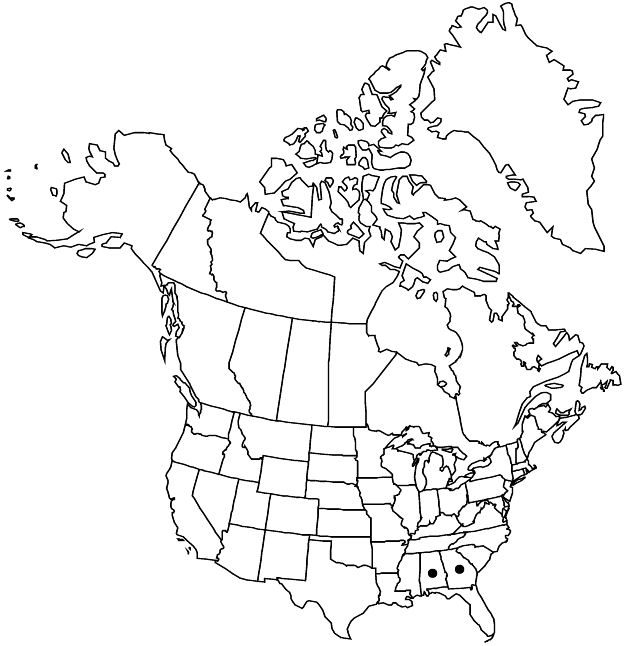Crataegus ignava
Biltmore Bot. Stud. 1: 31. 1901.
Shrubs, 20–40(–50) dm. Stems: twigs ± flexuous, new growth reddish green, glabrous, 1-year old tan to shiny chestnut, older ± dark gray, often reddish tinged; thorns on twigs ± numerous, straight, 1–2-years old black, ± fine, 2–3 cm (3–5 cm at 2-years old). Leaves: petiole length 30–40% blade, glabrous, sessile-glandular, glands black; blade ± ovate or ovate-rhombic, 2.5–3.5 cm, coriaceous, base broadly cuneate or ± rounded, lobes 2 or 3 per side, sinuses moderately deep, lobe apex acute, margins obscurely crenate-serrate, teeth gland-dotted, veins 4 or 5 per side, apex acute, abaxial surface glabrous, adaxial sparsely pilose young, soon glabrescent. Inflorescences 2–5-flowered; branches glabrous; bracteoles mainly persistent through petal-fall, numerous, linear, herbaceous to membranous, margins usually stipitate-glandular. Flowers 15 mm diam.; hypanthium glabrous; sepals narrowly triangular, 6 mm, margins glandular-serrate, abaxially glabrous; stamens 20, anthers pale pink, sometimes pale purple; styles 3–5. Pomes orange-red, suborbicular, 10–17 mm diam., glabrous; sepals spreading-recurved; pyrenes 3–5.
Phenology: Flowering Apr; fruiting Sep–Oct.
Habitat: Brush, rocky hills
Elevation: 50–200 m
Discussion
Crataegus ignava is locally common in east-central Alabama and north-central and central Georgia; it is one of the more distinct species in the series with its often rhombic-ovate, quite deeply lobed leaves and large orange-red fruit.
Selected References
None.

